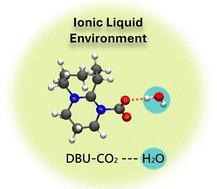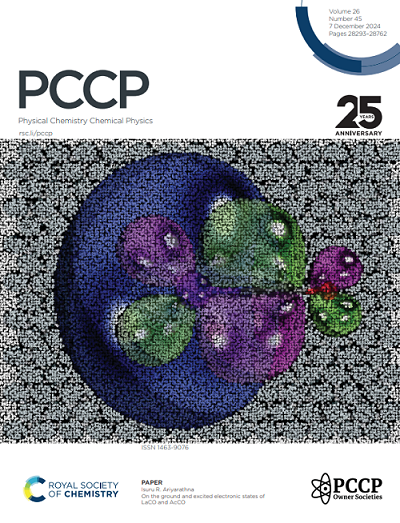Is the DBU–CO2 adduct stable in ionic liquid media?†
IF 2.9
3区 化学
Q3 CHEMISTRY, PHYSICAL
引用次数: 0
Abstract
The DBU–CO2 adduct was characterized for the first time by 13C NMR with labelled 13CO2 and IR spectroscopy. Theoretical calculations were crucial to determine that the adduct is stable in ionic liquid medium in the presence of water. These findings provide new insights into superbase–CO2 interactions, unveiling a new potential route to CO2 activation.

DBU-CO2加合物在离子液体介质中稳定吗?
DBU-CO2加合物首次通过13C核磁共振、13CO2标记和红外光谱进行了表征。理论计算对于确定该加合物在有水存在的离子液体介质中是稳定的至关重要。这些发现为超级碱-二氧化碳相互作用提供了新的见解,揭示了二氧化碳活化的新途径。
本文章由计算机程序翻译,如有差异,请以英文原文为准。
求助全文
约1分钟内获得全文
求助全文
来源期刊

Physical Chemistry Chemical Physics
化学-物理:原子、分子和化学物理
CiteScore
5.50
自引率
9.10%
发文量
2675
审稿时长
2.0 months
期刊介绍:
Physical Chemistry Chemical Physics (PCCP) is an international journal co-owned by 19 physical chemistry and physics societies from around the world. This journal publishes original, cutting-edge research in physical chemistry, chemical physics and biophysical chemistry. To be suitable for publication in PCCP, articles must include significant innovation and/or insight into physical chemistry; this is the most important criterion that reviewers and Editors will judge against when evaluating submissions.
The journal has a broad scope and welcomes contributions spanning experiment, theory, computation and data science. Topical coverage includes spectroscopy, dynamics, kinetics, statistical mechanics, thermodynamics, electrochemistry, catalysis, surface science, quantum mechanics, quantum computing and machine learning. Interdisciplinary research areas such as polymers and soft matter, materials, nanoscience, energy, surfaces/interfaces, and biophysical chemistry are welcomed if they demonstrate significant innovation and/or insight into physical chemistry. Joined experimental/theoretical studies are particularly appreciated when complementary and based on up-to-date approaches.
 求助内容:
求助内容: 应助结果提醒方式:
应助结果提醒方式:


